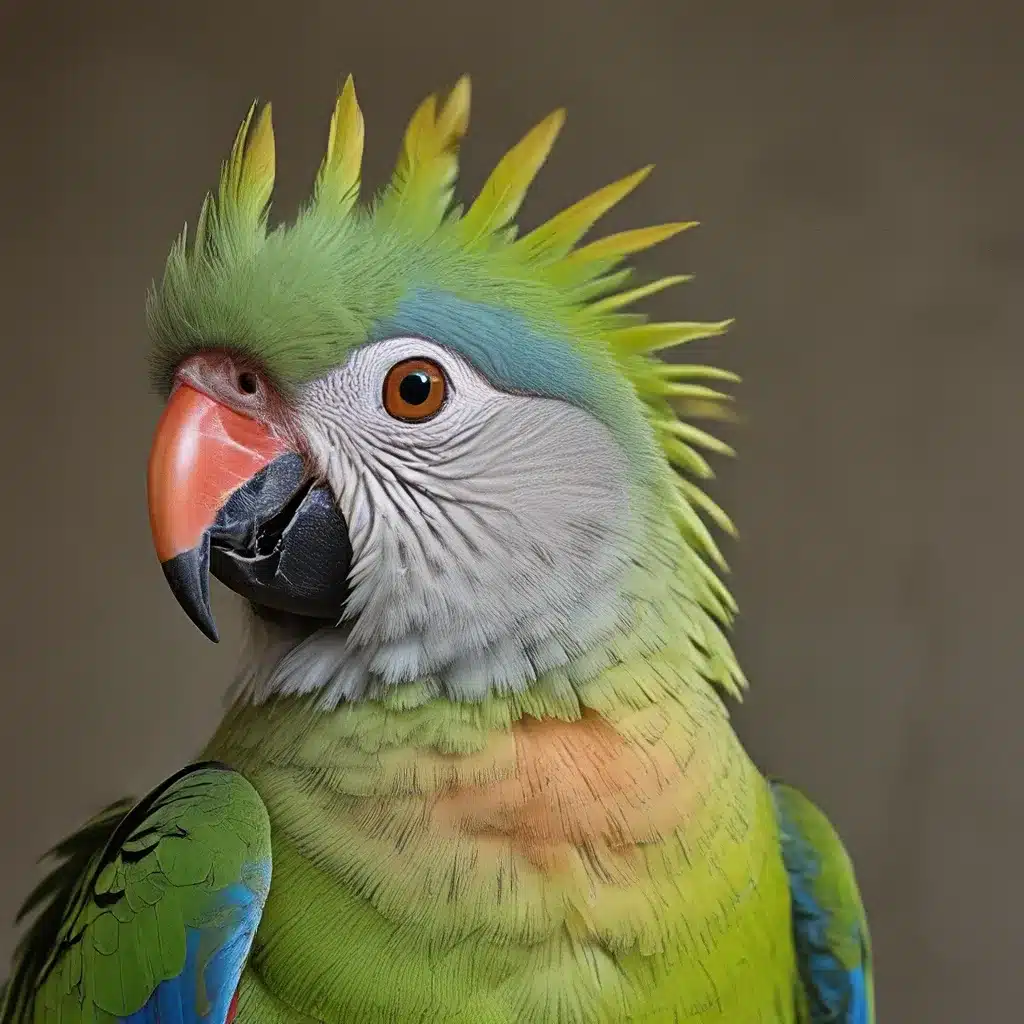
Ah, the humble parrot – those charismatic, feathered companions that have captured the hearts (and curiosity) of pet owners everywhere. But you know what they say – the early bird catches the worm. And when it comes to the wild and wonderful world of exotic avian species, there’s a whole flock of fascinating feathered fancies just waiting to be discovered.
Spreading Their Wings: Exploring Unique Avian Species
Sure, parrots might get all the attention, but have you ever heard of a Steller’s jay? Or marveled at the intricate, iridescent plumage of a black-billed magpie? These captivating creatures are just the tip of the avian iceberg, my friends.
Let’s start with the Steller’s jay – the bold, boisterous cousin of the classic blue jay. These striking birds are at home in the coniferous forests of the western United States, with their contrasting blue bodies and jet-black heads and crests. But don’t let their good looks fool you – Steller’s jays are known for their raucous calls and mischievous behavior, earning them a reputation as the class clowns of the avian world.
According to the Audubon Society, these jays can vary widely in appearance, with some populations displaying much paler coloration and even white markings on their heads. It’s like nature’s very own paint-by-number project – one that’s constantly changing and evolving.
And speaking of change, let’s talk about the black-billed magpie. This striking member of the corvid family (that’s the same group as crows and ravens, for you fellow bird nerds) is found across the western United States, strutting around with its bold black and white plumage. But the real showstopper? Those massive, basket-like nests they construct, up to 3 feet in diameter! Talk about a home improvement project.
Feathered Flyers Beyond the Backyard
Now, I know what you’re thinking – those are all well and good, but what about the more common backyard birds? Well, my feathered friends, there’s a whole flock of fascinating species waiting to be discovered, even in your own neighborhood.
Take the American robin, for example. Sure, these medium-sized birds with their rusty orange bellies and gray backs might be a familiar sight, but did you know they’re considered harbingers of spring? According to the Audubon Society, only some robins in the northern states migrate south for the winter, with the rest joining large roaming flocks in search of berries. It’s like a feathered version of a snowbird – but instead of chasing the sun, they’re chasing the fruit.
And then there’s the Northern cardinal, the state bird of no less than seven states (sorry, Louisville Cardinals, but the real cardinals definitely don’t have teeth). With their bright red plumage and distinctive crests, these birds are a true standout in the avian world. But did you know that the females, while less showy, are equally stunning in their own right, with soft tawny feathers that complement their male counterparts’ bold hues?
Unexpected Avian Antics
But let’s not forget the real showstoppers – the birds that might not be the most common, but are undoubtedly the most…shall we say, entertaining?
Take the Nanday conure, for example. This vibrant green parrot with its distinctive black head is a true character, but its aquatic antics are what really set it apart. According to one Reddit user, their Nanday conure has a penchant for trying to drown itself, diving headfirst into any water source it can find, only to collapse in a dramatic (and rather concerning) heap. It’s like a real-life Icarus, but with feathers instead of wax-covered wings.
And let’s not forget the humble lorikeets – those reincarnated goldfish of the avian world. As Mel Vincent, an Australian animal rehabilitator, explains, these vibrant, nectar-loving birds are the epitome of water-loving weirdos. They’ll happily dunk themselves in a shower or bath, only to emerge shivering and shaking, but seemingly none the worse for wear.
Feather-Ruffling Revelations
But perhaps the most fascinating thing about these unique avian species is the way they challenge our preconceptions about bird behavior and biology. Take the whole debate around waterproofing, for instance.
As Mel Vincent explains, the traditional theory about a bird’s preen gland being the key to waterproofing just doesn’t hold up. She’s seen birds with perfectly healthy preen glands still get soaked to the bone, and others with seemingly damaged glands managing to stay dry as a bone.
The real secret, it seems, lies in the structure and flexibility of the feathers themselves. By adjusting the angle of their feathers, birds can control whether water beads and rolls off, or is readily absorbed. It’s like nature’s very own built-in raincoat – one that’s constantly being adjusted and fine-tuned to suit the bird’s needs.
And that’s the real beauty of exploring the world of exotic avian species. These feathered fancies are constantly challenging our assumptions, pushing the boundaries of what we think we know about the natural world. They’re like nature’s own little mystery boxes, just waiting to be cracked open and explored.
Spreading Your Wings and Soaring
So, why settle for the typical parrots when you can dive into the delightful depths of the avian kingdom? From the bold and boisterous Steller’s jays to the dramatic, water-loving antics of the Nanday conure, there’s a whole flock of fascinating feathered fancies out there just waiting to be discovered.
And who knows, maybe one of them will find a home with you. After all, the early bird catches the worm – or in this case, the exotic pet that’s sure to ruffle some feathers (in the best way possible).
So spread your wings, my fellow bird enthusiasts, and get ready to soar into the wonderful world of avian wonders. Trust me, it’s a journey you won’t soon forget.

